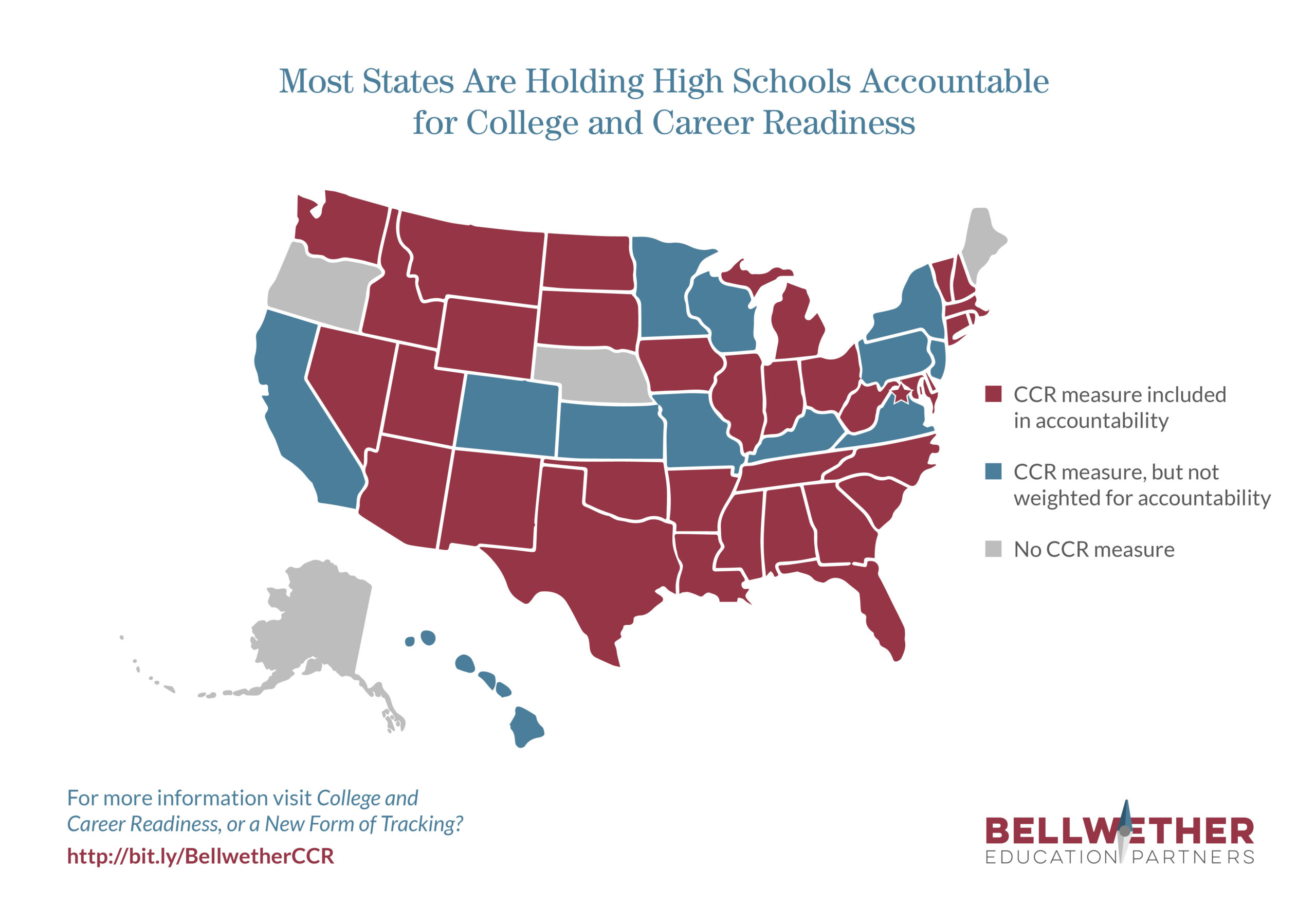As graduation rates have continued to rise across the nation, students increasingly require remediation at the next level. One study found that 50% of two-year college students and 20% of four-year college students required remedial classes, in some cases discouraging those students from persisting in higher education.
Combined with recent reports of student disengagement during COVID-19 remote learning and concern that high school dropout rates will rise, states must consider how best to provide the support and learning opportunities for their students to graduate college and career ready, even in the midst of a pandemic. Students need to be prepared to pursue economically stable postsecondary pathways in these tenuous times. This demands a variety of opportunities, with the goal of graduation as a starting point for postsecondary success, not simply the finish line of a high school journey.

In our paper released earlier this month, Chad Aldeman and I look at the data states are collecting around college and career pathways. One encouraging trend is that states have changed their formal high school rating systems beyond graduation rates and test scores to include a host of college- and career-readiness measures. By our count, 34 states plus DC have some form of indicator along these lines. Another 12 states are tracking one of these measures but do not yet hold schools accountable for them. Measuring postsecondary readiness is a crucial step for preparing students to succeed beyond high school and supporting the skills and content knowledge necessary for students so that they don’t require remediation at the next level.
Yet how do you establish high expectations during a pandemic when just getting through the school year seems challenging? One approach might include maintaining a focus on readiness measures, even as graduation criteria shift.
Due to the pandemic, many students in the class of 2020 were permitted to graduate from high school with requirements loosened or waived completely. For example, four midwestern states we reviewed — Indiana, Illinois, Michigan, and Minnesota — eased graduation requirements last spring. These changes are representative of similar measures taken by states across the country.
Indiana, Illinois, Michigan, and Minnesota all had adjusted cohort graduation rates above 80% in the 2017-18 school year. Presumably, with relaxed standards, their graduation rates for the class of 2020 will be the same or higher. Some of the adjustments they made for easing graduation last spring are noted below:
Indiana:
- Students were recognized as high school graduates if the number of credits students earned prior to this spring and the number of courses the students are currently enrolled in this semester add up to the state’s graduation requirements.
- Graduation test requirements were waived.
- Seniors on track to graduate before the pandemic closures were allowed to graduate.
- Permitted local districts to use a traditional grading structure (A-F) for students who would benefit from grades other than pass/incomplete (students who want letter grades for class rank, GPA, etc.), provided a student’s current grade is maintained or improved and does not decrease. Otherwise, Pass/Incomplete grades were used.
- Applied waivers for incomplete markings only to the 2020 Seniors. Students who are not seniors will be required to make up incomplete coursework in order to graduate in their cohort.
- Illinois’ largest district, Chicago Public Schools, waived the following graduation requirements for this year’s seniors: Service Learning, State-mandated Assessment (SAT/DLM-AA), Constitution Test, Financial Literacy, and Computer Science.
Michigan:
- Allowed districts to decide whether completion of remote learning assignments is required to advance to the next grade or to graduate.
- Asked districts to implement a process for grading 12th grade students and for awarding the credits required for graduation. Additionally districts had to provide for completion of the Michigan Merit Curriculum, confer diplomas, and create mechanisms to reflect continued learning by seniors.
- The Minnesota Department of Education required grades documented between March 16 and June 30, 2020 reflect the distance learning period resulting from the pandemic. This requirement included noting on transcripts and other official records that these grades should not be used for placement, admission, acceleration, or remediation purposes without looking at the full academic history of the student.
- Recommended that a student should not be reported as a failure and retained or given an “F” during this “unprecedented situation.”
Clearly states wanted to make it less stressful for students last spring to graduate during the disruption of school closures and distance learning. States will have to decide whether they continue graduation accommodations for the class of 2021. Regardless of this decision, each state needs to look closely at their college- and career-readiness measures and find ways to continue prioritizing postsecondary success. Read our report here.